Movie Review – Back To The Future Part II
Darker and nastier than the original, and yet vastly more complicated, Part II of this franchise continues to twisting time-travel exploits of Marty and Doc with a lot less fun (save for a ripping final act) and a lot wider scope.
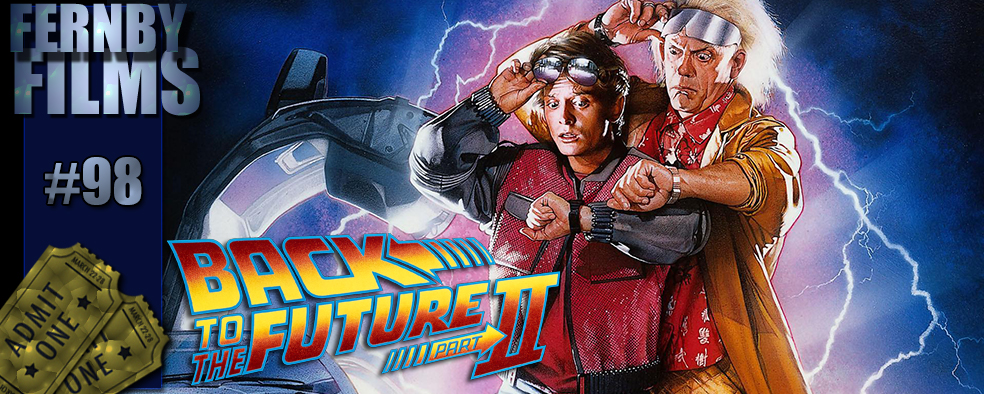
– Summary –
Director : Robert Zemeckis
Year Of Release : 1989
Principal Cast : Michael J Fox, Christopher Lloyd, Thomas F Wilson, Lea Thompson, Elizabeth Shue, James Tolkan, Jeffrey Weissman, Flea, Crispin Glover.
Approx Running Time : 108 Minutes
Synopsis: Marty travels to the future from 1985 to prevent a major family tragedy from occurring, only for an older Biff Tannen to ruin the timeline and create an apocalyptic alternative universe.
What we think : Darker and nastier than the original, and yet vastly more complicated, Part II of this franchise continues to twisting time-travel exploits of Marty and Doc with a lot less fun (save for a ripping final act) and a lot wider scope.
**********************
After the stunning success of the first film, it was inevitable that a sequel to Back To The Future would be made in due course. In true Hollywood style, however, most people believed a sequel would be simply a remake with a bigger budget, a low-par follow up to what was the equivalent to cinematic lighting in a bottle.
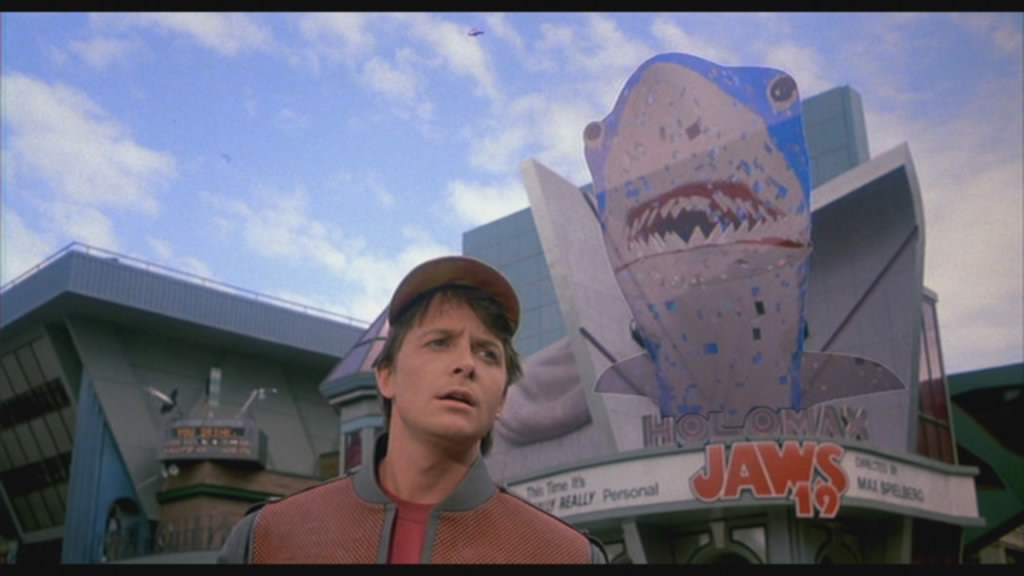
Obviously, with this in mind, Robert Zemekis and his crew embarked upon a filmmaking exercise only attempted a few times in all of Hollywood history: to film the sequels concurrently, with the same cast, and set immediately after the story finished in film 1. Lord Of The Rings, the Pirates of the Caribbean films, and the Matrix sequels are all examples of films shot simultaneously for the sake of budget, time and cast availability. Their success, depending on your point of view, varies substantially. Still, Zemeckis was determined to recreate the same energy and impact his original film had developed back in 85. Production commenced soon after the original film had finished it’s run at the box office, and Part II was released into cinemas in 89.
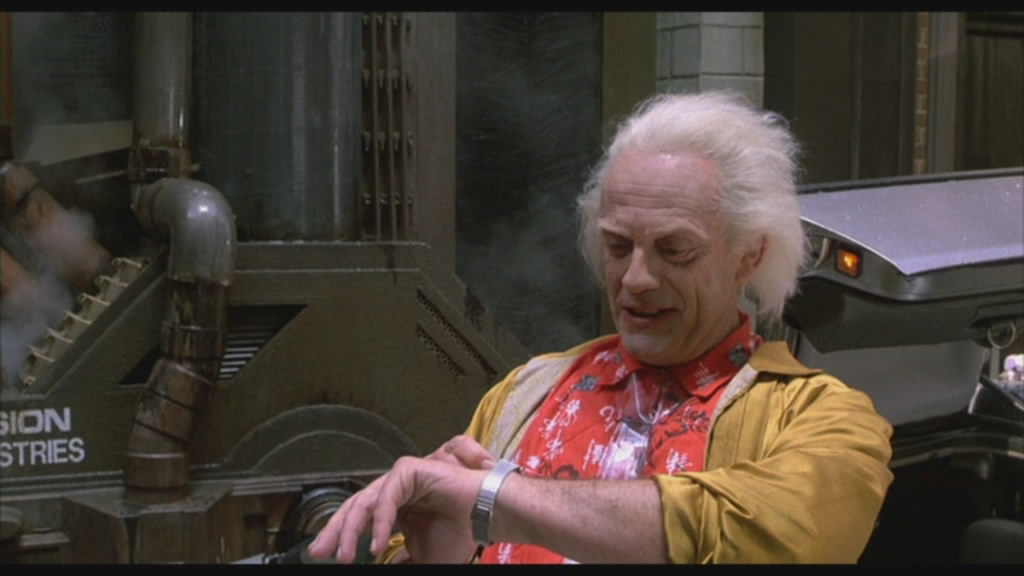
Inevitably, comparisons were made between the original film, and its immediate sequel. The reviews were not favourable. Deserved, or not?
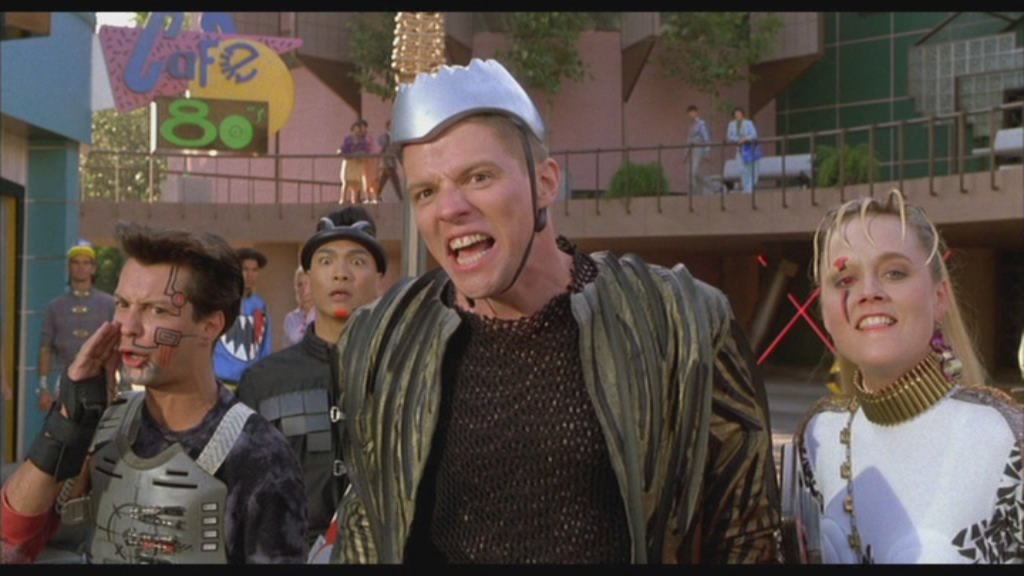
The sequel takes up where the first film left off: Marty, Doc and Jennifer take off into the future to right a future wrong. Along the way, old Biff from the future discovers the true nature of the DeLorean and visits the past with a sporting almanac (with results from the last 100 years of sports) which he gives to his younger self, in order to profit from future knowledge. This creates an alternate, darker version of the “present” in which Marty’s father is dead, his mother is married to Biff and Hill Valley is an anarchic city in the mould of Gotham. Doc Brown is locked in an insane asylum, and the rest of Marty’s family is locked up in jail.
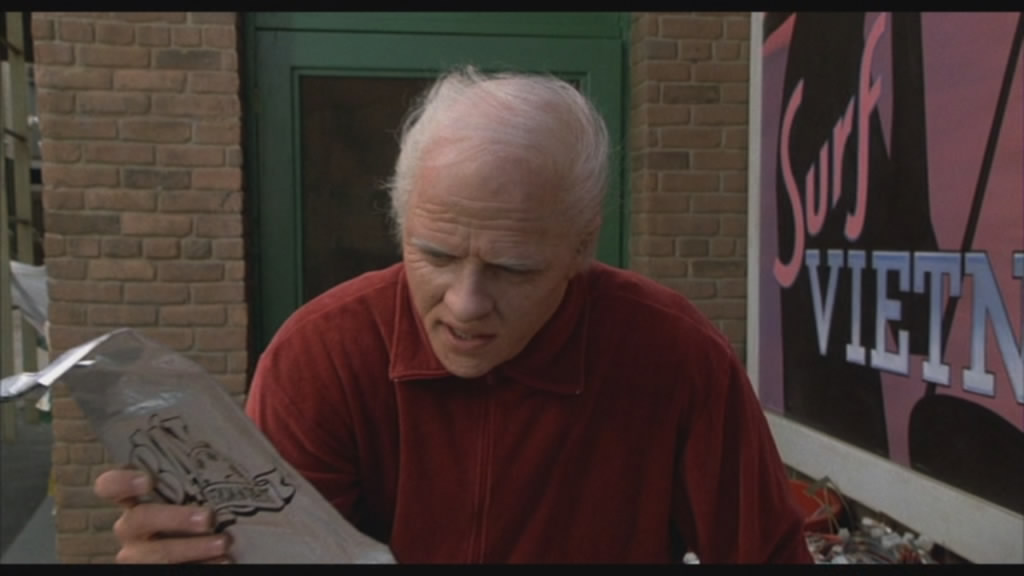
Yep, it’s all pear shaped, and Marty and Doc Brown find themselves having to travel back to 1955, to the timeline of the original film, in order to correct the future.
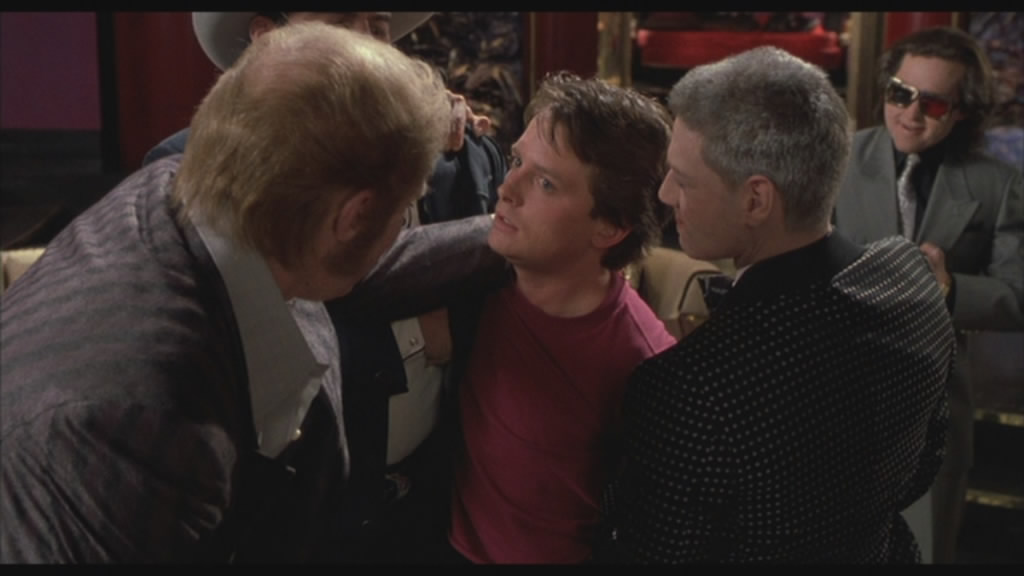
Is this sequel a lesser film than the original? In my opinion, no, it isn’t. It’s darker, certainly, and the tone is a lot more gritty and less family friendly than the original. But then, so was Empire Strikes Back in Star Wars. B2TF Part II takes our characters and sends them into a world where not everything is shiny and light: it’s grungy, horrible and brutal, and if you want to do something different to the original film, then perhaps this is the way to do it. Part II is so far removed from the tone and feel of the original film that it almost belongs in a different series: yet, throughout all this, the central characters remain essentially the same. Marty and Doc always look like they’re about to discover the Apocalypse, they’re so wound up.
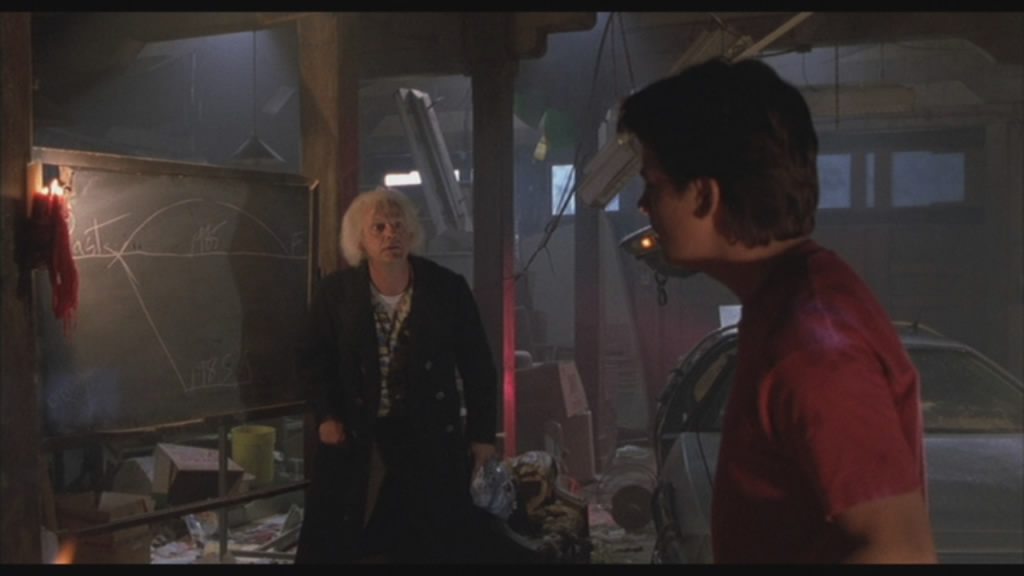
Zemeckis himself has stated that he feels he did not give Part II enough time in the editing room, as while he was editing, he was filming Part III elsewhere, so his attention was divided a little too much. That said, I still think Part II is a worthy continuation of the series, and although lacking the lighthearted tone of the original, still retains enough zest and energy to make it worthwhile. Zemeckis’ flair behind the camera shows again, much as it did in the original, with plenty of snazzy angles and camera tricks to keep you interested.
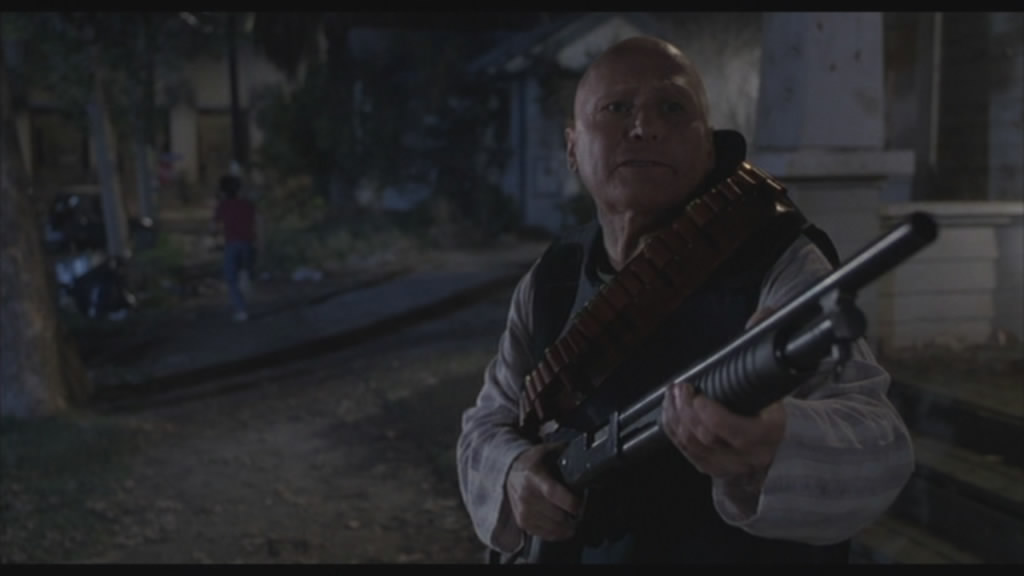
I’ve tried to figure out where the film’s faults lie, and I think I’ve come up with something. The problem the film has is that, in a similar way to The Two Towers, Empire Strikes Back and any other trilogy, the film has no real beginning, and an unresolved ending, which proves the old adage that narratively, you need these things to make a complete film. Perhaps it’s our conditioning to countless movies that do conclude properly, but an humans we seem to require a conclusion to our stories in order to obtain satisfaction. The “to be concluded” tag at the end comes at a point where there’s no real drama, no real twist, either: Marty goes back to the Doc and tells him he needs his help. The Doc faints, and that’s it. No dramatic Doctor Who styled-cliffhanger where the need to see what happens is so great you leave the cinema on tenterhooks. Instead, it’s kind of a “well, we got to this stage and we think we should stop now” moment, and it leaves you flat. But that’s not the main reason, though.
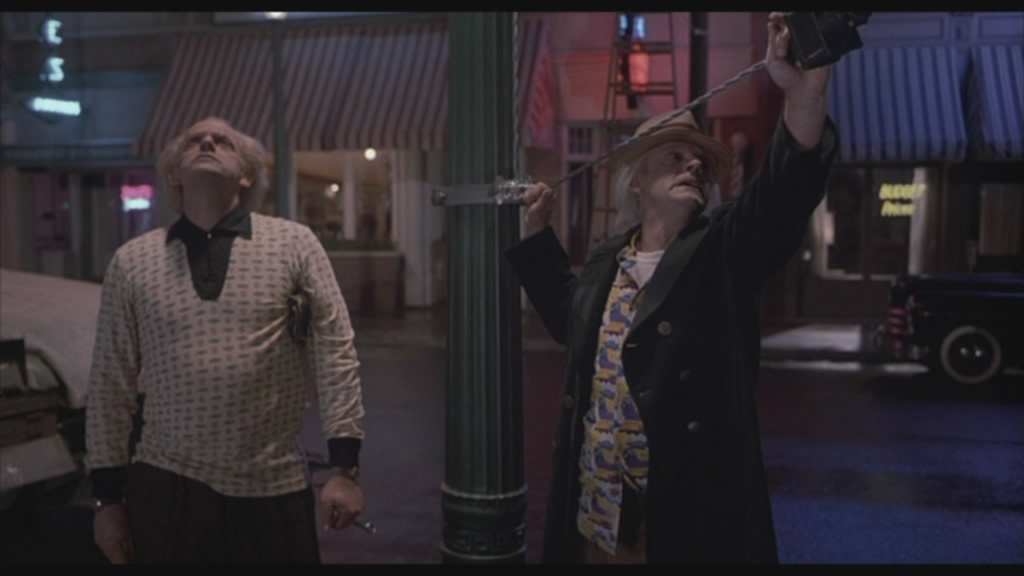
I think the film’s major failing is its harsh tone, its dark nature and vindictiveness that permeates the screen in a way that counteracts Marty and Doc’s effusive behaviour. It’s like sticking a clown in a funeral. The tone between storyline and characters clash, and this creates a jarring, often uncomfortable effect for the viewer. The prediction of Doc’s death, the destruction of Hill Valley as Biff takes over, the rather uncomfortably adult tone of Biff’s attitude towards Marty’s mother in the alternative 1985, and a general feeling of violent dread, makes for strangely depressing viewing.
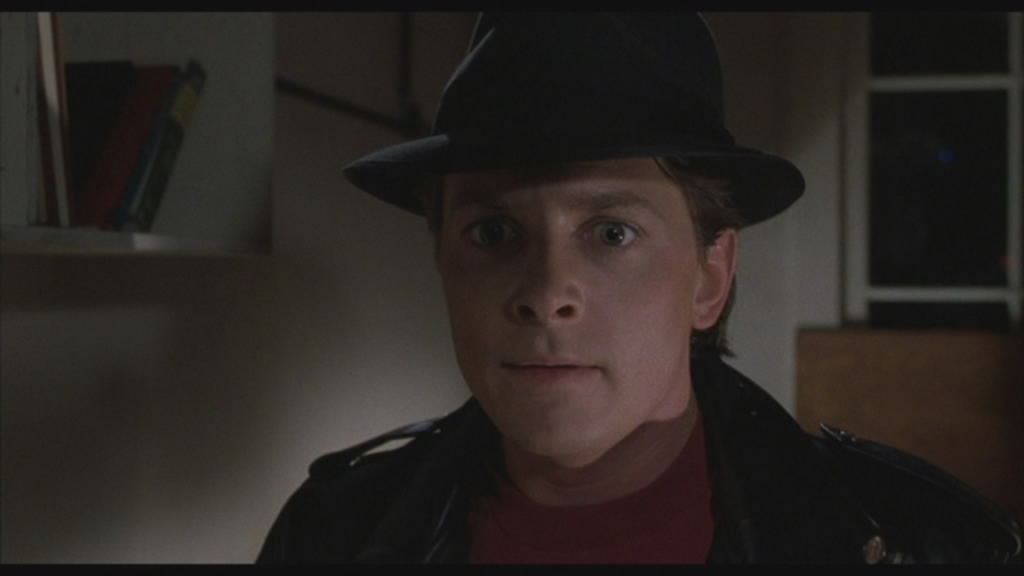
However, I would state again that this storyline is one that needs to be told if you are to have an effective resolution in Part III. At some point, you have to take your characters to a new bad place for them to recover from. Marty goes there, and he comes back. Was it handled effectively? Most people will say no, it wasn’t, but I tend to believe that by exploring our heroes failures and foibles in this way, we get to learn a little more about them. Marty isn’t a traditional hero: he says and does the right things when it counts but he’s not infallible. His inability to walk away whenever he’s called “chicken” is a recurring plot device (which occasionally wears thin, but pays off in Part III) comes from a human failing, and the exploration of this is required to delve deeper into the character.
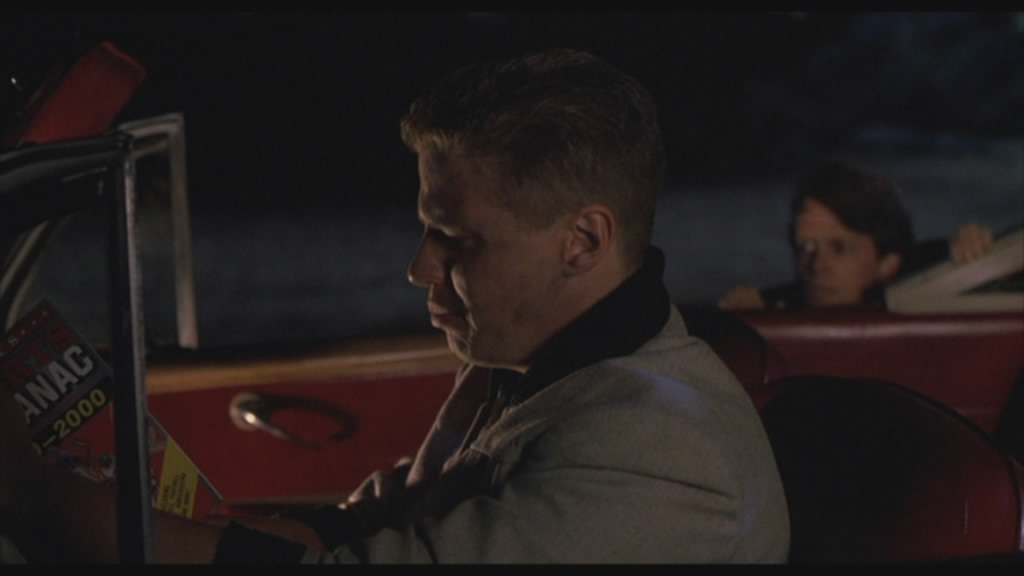
I think people went into this film with an expectation of something similar to the first film: lighthearted and breezy, with an effortless energy and joy. What they got was an apocalyptic, dark and slightly flat tale of missed destiny, altered fates and what-ifs. This, more than anything, put people off. Now, though, in the cold light of reminiscing, we can be more objective. Part II is a good film, make no doubt. Its attitude is different, and it goes where you least expect, but it’s still a good film. Well made, acted and with a hearty dose of black humor and freneticism, Back To The Future Part II is the less liked of all the trilogy, and I feel that’s a sentiment that’s largely undeserved.








 Continuity error in Back to the Future
Continuity error in Back to the Future

